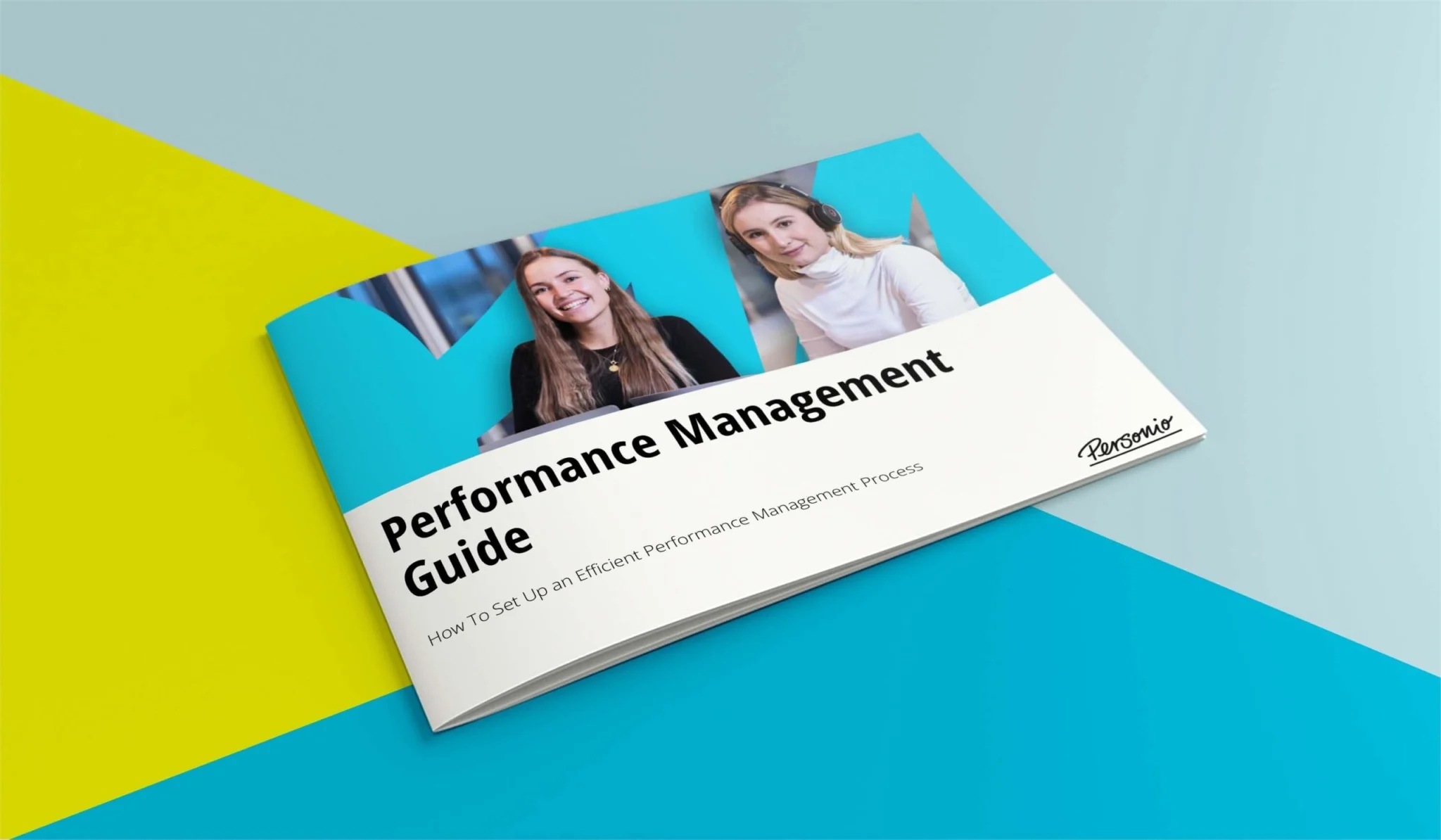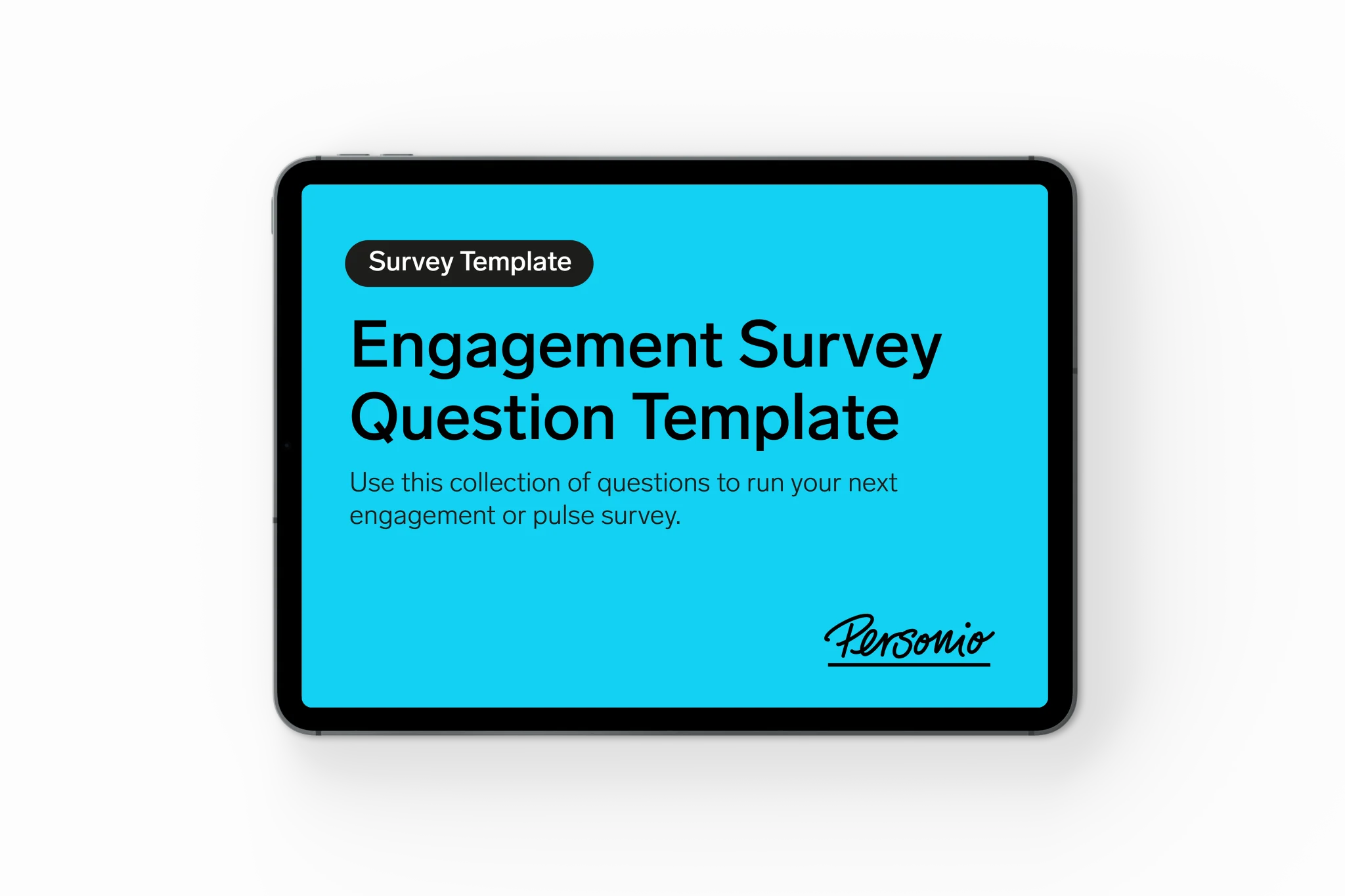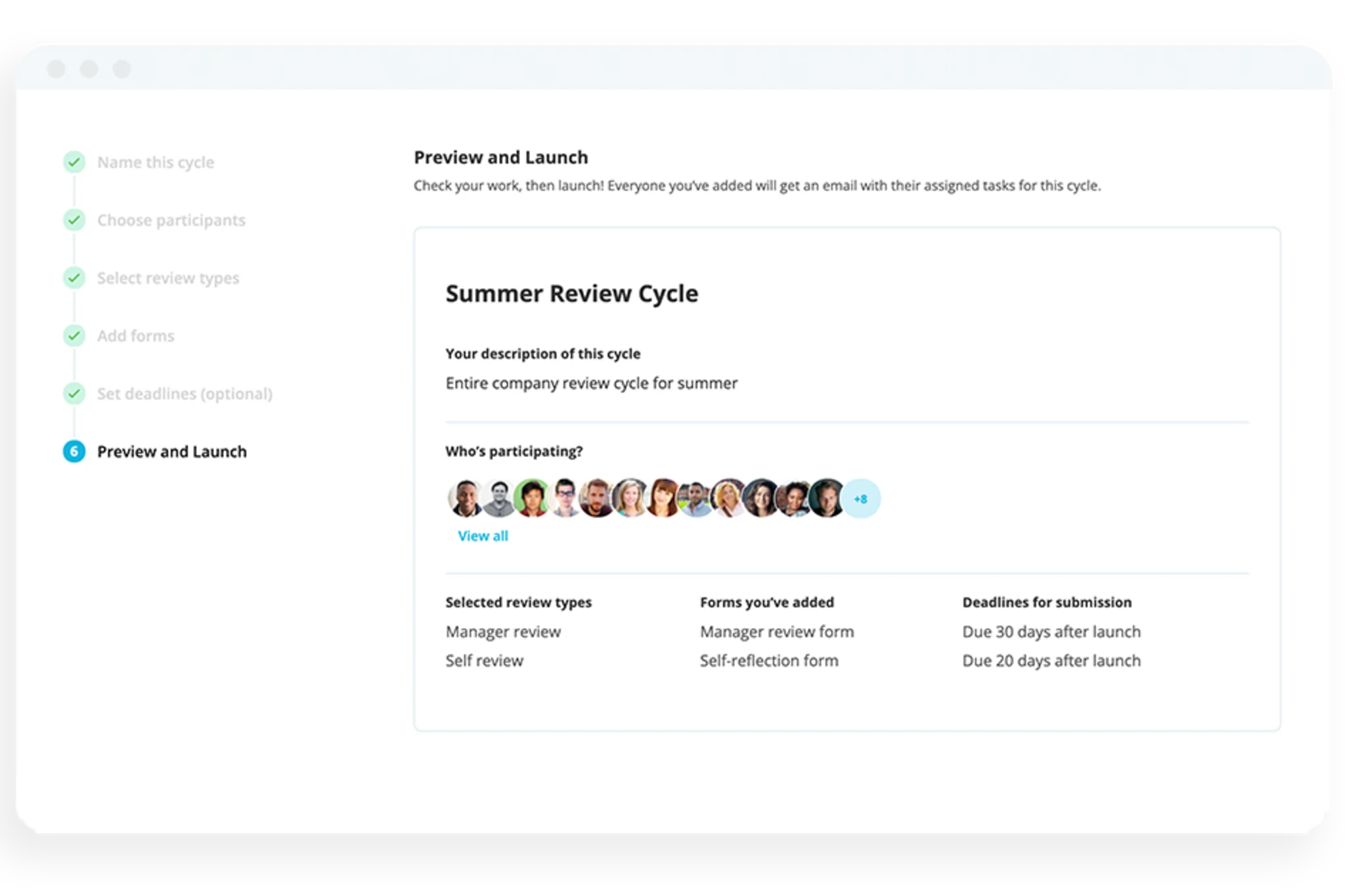8 Coaching Models Every HR Professional Needs To Know

In this article, we provide an in-depth overview of what a coaching model is while going over some of the most effective ones. Using this guide, you can begin to decide which coaching model is best for your business.
Key Facts
Coaching models are often instrumental in the continued professional development of a company’s workforce.
Most coaching models rely on asking questions and guiding employees toward a development plan that works for them.
The best way to tell that a coaching model is successful is by using analytics to measure an employee’s performance.
What Are Coaching Models?
Coaching models are frameworks to help leaders provide in-depth support and growth opportunities for their teams. Each model has different ways of providing instruction along with unique pros and cons that make each one good for specific situations. Picking out the right one for your team can mean the difference between growth and stagnation.
The Importance of Coaching Models for Organisations and Teams
Implementing the right coaching models gives managers a clearer path for employees’ professional development. While each has a different method of teaching and may even train different aspects of an employee’s professional life, they can be vital for improving worker performance across the board.
Guiding workers toward valuable growth opportunities teaches them new skills and knowledge that can make them more effective within their positions – a prospect that improves the company overall.
8 Coaching Models You Need To Know
While this isn’t an exhaustive list of all coaching models, each one listed below is very effective in the right situation and can help employees learn valuable skills. A basic understanding of each can help you decide which one to make your preferred coaching method.
1. GROW Coaching Model
The GROW coaching model was developed in the late 1980s by business coaches Graham Alexander, Alan Fine and Sir John Whitmore. It’s designed to build employee confidence and motivate them to pursue professional goals, possibly increasing their productivity in the workplace.
Each letter within GROW stands for a stage on your team’s journey to self-improvement.
G stands for Goals
The goals stage outlines what it is that employees would like to achieve while they’re at the company. Sometimes they’ve already figured out their aspirations, and other times the coach has to guide them with future-focused questions to help them find their most desired path forward.
R stands for Reality
After the goals stage comes the reality stage, where the coach helps the employees get a clear view of their current abilities and how far they are from achieving their goals. Here, you analyse the employees’ strengths, skills and available resources to help them overcome any barriers that prevent their growth.
O stands for Options
The options stage is where the coach helps employees find the best ways to bridge the gap between their goals and reality. It’s not enough to come up with one idea and be done with it. All potential options should be considered to create the most optimal path for growth.
W stands for Will
After the options stage comes the will stage, where the employees identify the steps they’ll take to get closer to their goals. Having a series of smaller objectives that lead to larger ones helps workers visualise their path and motivates them to keep following it. Additionally, the coach will continue to support the employees’ endeavours and help find solutions if part of the development plan isn’t working.
2. OSKAR Coaching Model
Developed in 2002 by coaches Mark McKergow and Paul Z. Jackson, the OSKAR Coaching Model is similar to GROW but allows time for your team to reflect on their accomplishments. You can implement this model by following the steps listed below.
O stands for Outcome
Here, the coach works with an employee to determine both the coach’s and the employee’s goals while working for your organisation. Typically this is done by asking open questions like “What skill would you like to gain?” or “What goals do you have for the future?”.
S stands for Scale
The scale stage takes the employee’s goals discovered from the outcome stage and refines them with more realistic expectations. Coaches often use a rating scale to determine how close each employee believes they are to achieving their goals. From there, the coach asks more leading questions that narrow the scope of the employee’s goals until the coach has a better idea of what’s needed.
K stands for Know-how
In this stage, the coach assesses an employee’s current strengths, weaknesses and skills to determine how they need to develop to achieve their goals. A more solid plan of action starts to form as a result, providing a clearer path from where the employees are to where they’d like to go.
A stands for Affirm & Action
This stage of the OSKAR coaching model lets employees reflect on the things they’re already doing well while affirming the actions necessary to improve performance and meet their goals. This positive reinforcement of the workers’ current state helps motivate them to continue their professional development.
R stands for Review
The review stage is meant to occur at the beginning of the following coaching session, where the coach measure gives an overview of the employee’s progress. Here, the steps they’ve made towards their goal are praised while highlighting areas where they can improve.
OSKAR Model Coaching Questions
Some of the main questions asked during each stage of the OSKAR model include:
Outcome. “What do you want to achieve?” or “What are you looking to get out of this coaching session?” are common questions.
Scale. “On a scale from 1 to 10, how close do you think you are to achieving your goal?” or “What does reaching your end goal look like?” are common questions.
Know-how. “What skills do you need to acquire to reach your goal?” or “What are some resources you know of that can help with your professional development?” are common questions.
Affirm & Action. “What’s something you’re doing now that’s effective for reaching your goal?” or “What actions will you take in the future?”are common questions.
Review. “How have you progressed since the last coaching session?” or “What new things are you trying or going to try to reach your goal?” are common questions.
3. STEPPPA Coaching Model
The STEPPA coaching model was created in 2003 by Angus McLeod and is designed to utilise the emotional context of a situation to define new goals. It’s most helpful when complex or difficult emotions hinder an employee’s growth.
S stands for Subject
In the initial subject stage, the coach identifies what the employee needs to discuss and the context behind the topic. Typically, the employee leads the discussion while the coach focuses on supporting them by recognising and working through emotions that may hinder development.
T stands for Target
Here, the employee decides on an attainable target or outcome they want to achieve within the company. If they don’t have one, the coach guides the employee towards an outcome that fits their current skills and is motivational enough to inspire continual progress.
E stands for Emotions
The emotions stage is where the coach assesses the feelings the employees have put behind their goals and decides whether those feelings may help or hinder progress. If strong negative emotions are associated with the stated outcome, the coach and employee must consider whether the goal is worth it.
P stands for Perception
In the perception stage, the coach encourages employees to look at their professional goals in a wider context. Both parties determine how pursuing that goal impacts the thoughts and emotions of an employee’s colleagues and how many doors it opens, leading to new opportunities for growth.
P stands for Plan
Once they’ve reached the planning stage, the coach helps guide the employee to setting up the first concrete steps towards achieving their goal.
P stands for Pace
After the employee creates a plan, they need to set semi-strict deadlines and timescales for completing each task to maintain their commitment. Each deadline should be within a realistic timeframe, not too far off to avoid the employee losing motivation and not too close to cause stress.
A stands for Action
In the final action stage, the coach and employee should review the development plan and iron out any overlooked details or revise decisions that don’t fit the stated goal. Ideally, the coachee should leave the session with a firm understanding of their short- and long-term goals and how their emotions motivate continued progress.
4. Solution Coaching Model
This coaching model has a less involved process than others because of its focus on finding solutions to problems rather than discussing the context around them. The coach uses present and past tense language to frame the issue as solved and help the employee more easily visualise a path towards the end goal.
As a result, the solution coaching model only has three essential components for effective coaching:
Questioning. Asking questions framed in present or past tense helps the employee work backwards from the problem to reach a solution.
Scaling. This guides the employee on how to get where they want to be from where they are.
Imagination. This encourages employees to envision how their work life would change if they accomplished their goal; this has the end goal of motivating employees.
5. CLEAR Coaching Model
The CLEAR model was developed in 1985 by Peter Hawkins. It focuses on promoting personal change within the employee to help them reach their professional goals, over the course of multiple sessions.
C stands for Contract
In the contract stage, the coach and employee work together to define what the employee would like to achieve from the programme. In addition, they define what successful sessions between coach and coachee look like from the employee’s perspective to gauge the desired outcome more accurately.
L stands for Listen
After the contract stage, coaches need to listen to their coachees to gain as clear an understanding as possible about their goals. At most, the coach should only nudge the conversation if it strays too far from the main topic.
E stands for Explore
After listening to the employee, the coach helps them explore the emotional connection they have for their current situation and how it might need to change to reach a different one.
A stands for Action
In the action stage, the coach asks questions that help guide employees towards the best actions necessary to reach their goals. These questions will aid in getting the coachee to commit to these changes by internalising the new outlook envisioned in the exploring stage.
R stands for Review
As the name suggests, the review stage is where the coach and employee go over the session’s key points and the established solutions. If they don’t match the expectations outlined in the contract stage, they can be further refined before ending the meeting.
Additionally, the review stage carries over to the beginning of the next session, when the coach asks the employee if their new outlook helped them grow.
6. FUEL Coaching Model
The FUEL coaching model was created by John Zenger and Kathleen Stinnett, detailed in their book “The Extraordinary Coach: How the Best Leaders Help Others Grow”. It’s designed to pair coaches who ask open-ended questions with employees who’d benefit the most from a deep analysis of their situation. It helps coaches form an ideal outcome for the coaching sessions and helps employees take accountability for their future growth.
F stands for Frame the Conversation
The coach and employee agree on the context of the discussion beforehand, agreeing on its purposes, process and outcome. Setting the goal for the conversation and some general talking points helps keep the conversation flowing while the coach works to keep it on track.
U stands for Understand the Current State
Next, the coach asks questions to get a clearer picture of the employee’s situation, with the goal to challenge their assumptions as the discussion progresses. This portion of the process helps the coach readily identify issues that could be holding the coachee back from growing within the company.
E stands for Explore the Desired Goal
The coach then asks questions about the employee’s ultimate professional goals, using their understanding of their current situation to collaboratively brainstorm methods to get them to their desired state. Each option is scrutinised by the employee, with the coach providing advice where needed as they settle on their professional development plans.
L stands for Lay Out the Plan
Once the employee decides on several growth options, they lay them out into actionable steps that push them closer towards their goals. In addition, the plan would include reasonable deadlines to complete each step and regular check-ins with the coach.
7. AOR Coaching Model
The AOR coaching model focuses more on the relationship between coach and employee than similar models. It sees a strong relationship between both parties as the key to an effective session, particularly with AOR’s trial-and-error problem-solving method. This model isn’t built to help people achieve predetermined goals but teaches them to resolve issues in the shortest amount of time with as few mistakes as possible.
A stands for Activities
The activities stage is where the coach asks about the employee’s daily actions or factors about their work that are under their control. For example, time spent checking their emails is an activity. Examining each activity should produce quantifiable results that can be tracked for progress.
O stands for Objectives
Here, the coach sets work-related goals for the employee’s activities that are often slightly higher than what they can achieve normally. For example, the coachee must complete all of their work within a shorter time frame than they’re used to.
R stands for Results
The results phase often occurs at the beginning of the next session because it goes over the effects the objectives have on the employee’s productivity. If there’s been no notable change, then the coach can help the coachee change and refine the objectives until they’re achievable.
8. WOOP Coaching Model
The WOOP model was developed by psychologist Gabriele Oettingen as a simple yet effective method to help employees identify and achieve their goals. It was built based on the principle that a greater understanding of what they want to achieve can help motivate them to work towards it.
W stands for Wish
The coach asks the employee questions to determine what they want to achieve within the workplace.
O stands for Outcome
After determining the employee’s ultimate goals, the coach helps them envision how their work life will change if they reach their objective. Envisioning all the benefits they could gain while progressing towards a large goal helps motivate the employee to continue down that path.
O stands for Obstacles
After setting the outcome in their mind, the coach asks the employee questions to help them identify the obstacles they’ll face more concretely. They’ll often focus on personal or self-inflict issues because they are directly within the employee’s control.
P stands for Plan
After completing the previous steps, the coach helps the employee create a plan with all the growth opportunities needed to overcome obstacles and attain their goals. This plan will also include reasonable deadlines for each actionable step and dates to check in with further sessions with the coach.
How To Measure Coaching Style Success
It’s important to track the effectiveness of each coaching model once implemented. While each can positively impact an employee’s performance, there’s no guarantee it will. Several metrics can help determine whether a coaching method is successful or needs to be refined. For example:
Performance Metrics. Possibly the simplest method to track performance metrics shows how well an employee is doing their job. Jumps in win rate, conversion, meeting quotas and other measures of success are good indicators of the effectiveness of a coaching model.
Activity Metrics. These track where employees spend most of their energy during work hours, whether taking phone calls, attending meetings, writing emails or selling new clients on a product. It’s more difficult to determine coaching success from these metrics. But the coaching model is likely effective if using their time more wisely is part of an employee’s development plan.
Cultural Metrics. These metrics are more personal factors in an employee’s life. It measures the perceived stress of the employees, the level of employee satisfaction and the level of employee retention. Often, these factors can be influenced by how much each employee feels supported, so quality coaching often impacts them directly.
Frequently Asked Questions About Coaching Models
What Are Coaching Models?
Coaching models guide employees to determine or examine their goals and develop in-depth plans for how to achieve them.
How Important Are Coaching Models?
Coaching models help employees increase their performance and productivity as they reach their goals. Additionally, coaching helps employees feel supported, making them less likely to leave your organisation.
What Are the Best Coaching Models?
The best coaching model is the one that fits the employee’s situation and helps them overcome any obstacles that arise during their professional development.
Refine Your Coaching Method With Personio
Each available coaching model has the potential to help your employees, it’s just a matter of finding the right one.
However, this can be difficult to find out without something to measure an employee’s performance after a coaching session, which is where Personio comes in.
Loaded with useful analytics and performance features, Personio can help refine your coaching methods to give employees the biggest push forward.
Book your free demo to learn how Personio can help upgrade your people operations for now and into the future.
Disclaimer
We would like to inform you that the contents of our website (including any legal contributions) are for non-binding informational purposes only and does not in any way constitute legal advice. The content of this information cannot and is not intended to replace individual and binding legal advice from e.g. a lawyer that addresses your specific situation. In this respect, all information provided is without guarantee of correctness, completeness and up-to-dateness.



